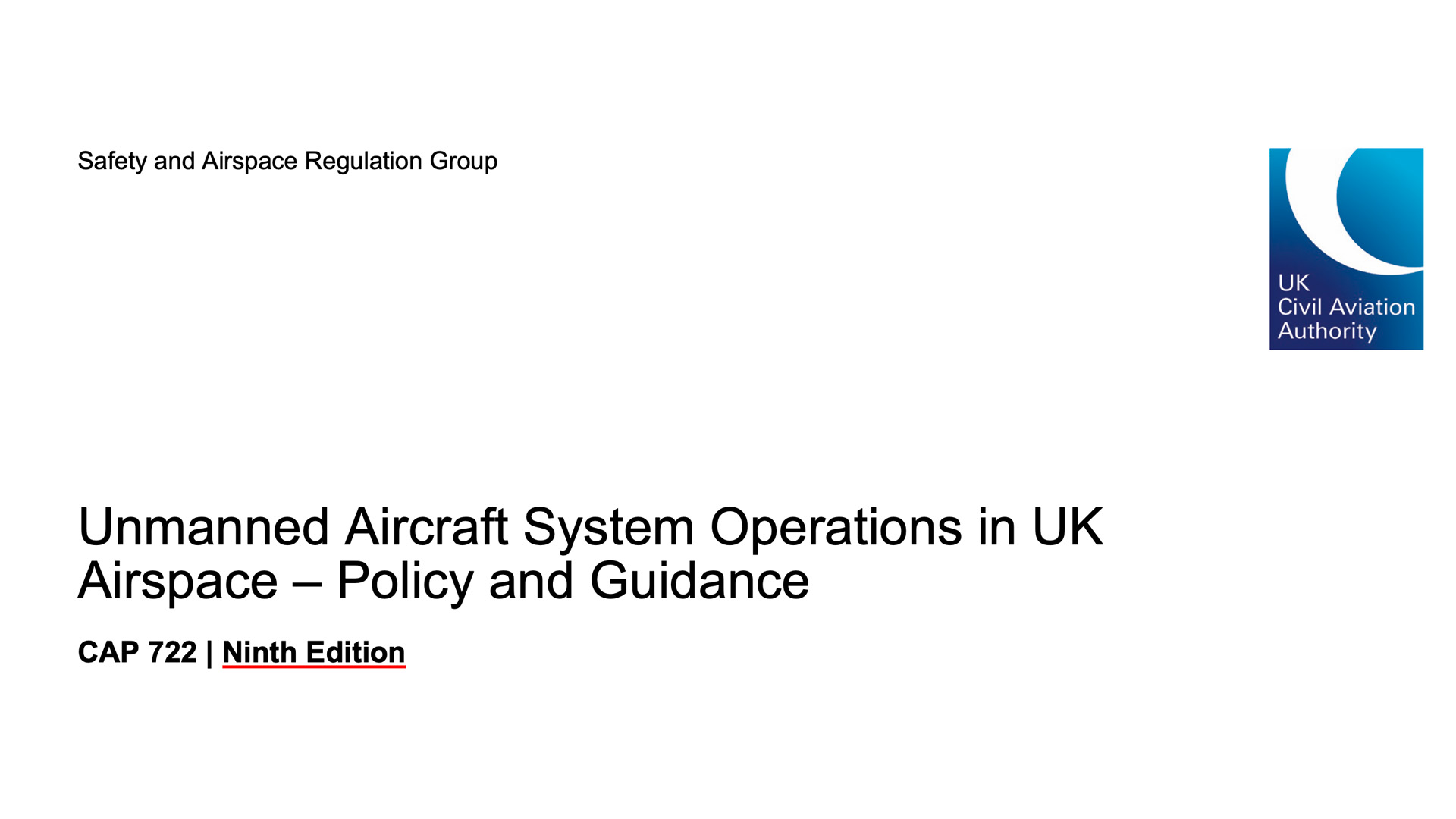Read Time 5 mins
15/12/2022

OVERVIEW
CAP722 is the CAA’s guidance on the operation of drones, UAVs, in the UK. In basic terms it tells you what rules you must abide by when flying drones.
On the 7th December 2022 the CAA issued a new version, version 9. In this new version they changed the wording around the rules of Visual Line of Sight (VLOS).
The Changes
CAP722 Version 8 (the old version)
2.1.1 Visual line of sight operations(VLOS)
Operating within Visual Line of Sight (VLOS) means that the remote pilot must be able to clearly see the unmanned aircraft and the surrounding airspace at all times while it is airborne. The key requirement of any flight is to avoid collisions and a VLOS operation ensures that the remote pilot is able to monitor the aircraft’s flight path and so manoeuvre it clear of anything that it might collide with. While corrective lenses may be used, the use of binoculars, telescopes, or any other forms of image enhancing devices are not permitted. Putting things in very simple terms, when operating VLOS, the aircraft must not be flown out of sight of the remote pilot’s eyes.
The CAA will normally accept that the VLOS requirement is met when the UA is flown out to a distance of 500 metres horizontally from the remote pilot, but only if the aircraft can still be seen at this distance.
CAP722 Version 9 (the new version)
2.1.1. Visual line of sight operations (VLOS)
When operating within VLOS, the remote pilot must be able to see the UA at all times during the flight, sufficiently well to be able to maintain control of it. The maximum distance from the remote pilot at which this can be safely achieved depends on a number of factors and may change from flight to flight.
When operating within the open category, or when set out within the terms of an operational authorisation for the specific category, the UA must be operated within visual line of sight of the remote pilot (VLOS).
A VLOS Operation is defined within UK Regulation (EU) 2019/947 as:
‘a type of UAS operation in which, the remote pilot is able to maintain continuous unaided visual contact with the unmanned aircraft, allowing the remote pilot to control the flight path of the unmanned aircraft in relation to other aircraft, people and obstacles for the purpose of avoiding collisions.’
Maintaining VLOS ensures the remote pilot can monitor the aircraft’s position, orientation, and the surrounding airspace at all times. This is important in order to ensure the UA can be manoeuvred clear of anything that might pose a collision hazard.
While corrective lenses may be used, the use of binoculars, telescopes, or any other forms of image enhancing devices are not permitted.
Note:
Provision is made within UK Regulation (EU) 2019/947 for the use of FPV equipment within the Open Category, providing an observer is used.
The maximum VLOS distance varies for every operation, and will include such considerations as:
- The size of the aircraft (and its ‘visual conspicuity’)
- Any lighting onboard the UA to aid in orientation and navigation
- The weather conditions (fog, sun glare etc.)
- The remote pilot’s eyesight
- Terrain and obstacles that may obscure the view between the RP and the UA
It is for the RP to satisfy themselves, after careful consideration of the above guidance, the maximum horizontal distance that can be safely achieved whilst still maintaining unaided visual contact with the UA.
Note:
It is important to consider additional technical factors which may limit the safe operating distance from the RP and the UA during VLOS operations. For example, the C2 link capability of the UAS.